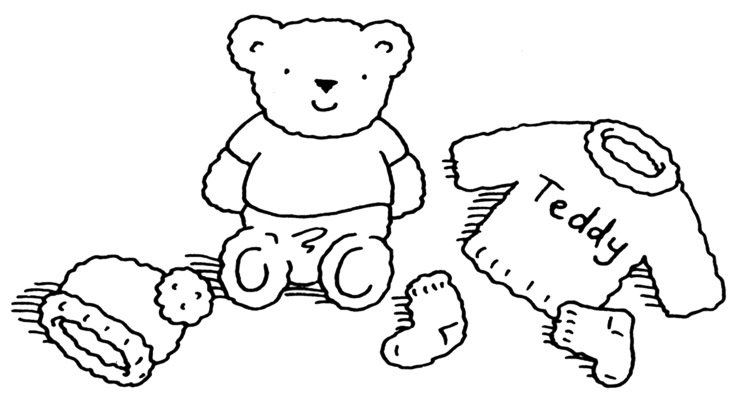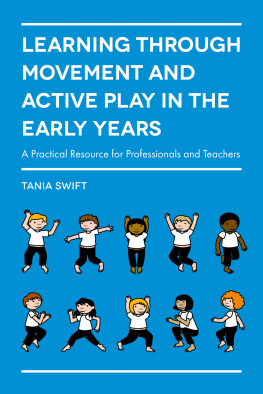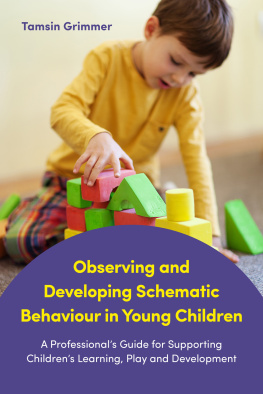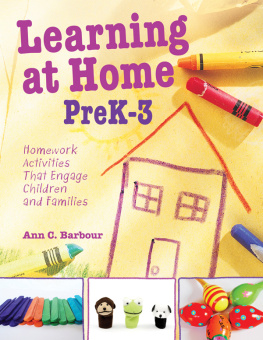Title page
Planning for Learning
through Clothes
By Rachel Sparks Linfield and Christine Warwick
Illustrated by Cathy Hughes
Publisher Information
Published by Practical Pre-School Books, A Division of MA Education Ltd,
St Judes Church, Dulwich Road, Herne Hill, London, SE24 0PB
Revised edition MA Education Ltd 2008
First edition MA Education Ltd 2001
www.practicalpreschoolbooks.com
Digital edition converted and distributed in 2012
By Andrews UK Limited
www.andrewsuk.com
Front and back cover images: all attempts to credit copyright owners were made at the time going to press.
All rights reserved. No part of this publication may be reproduced, stored in a retrieval system, or transmitted
by any means, electronic, mechanical, photocopied or otherwise, without the prior permission of the publisher.
Planning for Learning through Clothes
Making plans
Why plan?
The purpose of planning is to make sure that all children enjoy a broad and balanced curriculum. All planning should be useful. Plans are working documents that you spend time preparing, but which should later repay your efforts. Try to be concise. This will help you in finding information quickly when you need it.

Long term plans
Preparing a long-term plan, which maps out the curriculum during a year or even two, will help you to ensure that you are providing a variety of activities and are meeting the requirements of the Statutory Framework for the Early Years Foundation Stage.
Your long-term plan need not be detailed. Divide the time period over which you are planning into fairly equal sections, such as half terms. Choose a topic for each section. Young children benefit from making links between the new ideas they encounter so, as you select each topic, think about the time of year in which you plan to do it. A topic about minibeasts will not be very successful in November!
Although each topic will address all the learning areas, some could focus on a specific area. For example, a topic on clothes would lend itself well to activities relating to Personal, Social and Emotional Development and Creative Development. Another topic might particularly encourage the appreciation of stories. Try to make sure that you provide a variety of topics in your long-term plans.
Autumn 1 - People who help us
Autumn 2 - Autumn/Christmas
Spring 1 - Nursery rhymes
Spring 2 - Clothes
Summer 1 - Toys
Summer 2 - Minibeasts
Medium-term plans
Medium-term plans will outline the contents of a topic in a little more detail. One way to start this process is by brainstorming on a large piece of paper. Work with your team writing down all the activities you can think of which are relevant to the topic. As you do this, it may become clear that some activities go well together. Think about dividing them into themes. The topic of Clothes, for example, has themes such as Socks and shoes, Clothes for all weathers, Uniforms and Clothes from around the world.
At this stage, it is helpful to make a chart. Write the theme ideas down the side of the chart and put a different area of learning at the top of each column. Now you can insert your brainstormed ideas and will quickly see where there are gaps. As you complete the chart, take account of childrens earlier experiences and provide opportunities for them to progress.
Refer back to the Statutory Framework for the Early Years Foundation Stage and check that you have addressed as many different aspects of it as you can. Once all your medium-term plans are complete, make sure that there are no neglected areas.

Day-to-day plans
The plans you make for each day will outline aspects such as:
- resources needed;
- the way in which you might introduce activities;
- individual needs;
- the organisation of adult help;
- size of the group;
- safety;
- timing.
Identify the learning and ELGs that each activity is intended to promote. Make a note of any assessments or observations that you are likely to carry out. After carrying out the activities make notes on your plans to what was particularly successful, or any changes you would make another time.
A final note
Planning should be seen as flexible. Not all groups meet every day, and not all children attend every day. Any part of the plan can be used independently, stretched over a longer period or condensed to meet the needs of any group. You will almost certainly adapt the activities as children respond to them in different ways and bring their own ideas, interests and enthusiasms. The important thing is to ensure that the children are provided with a varied and enjoyable curriculum that meets their individual developing needs.
It is important to appreciate that the ideas presented in this book will only be a part of your planning. Many activities that will be taking place as routine in your group may not be mentioned. For example, it is assumed that sand, dough, water, puzzles, floor toys and large scale apparatus are part of the ongoing pre-school experience, as are the opportunities to develop ICT skills. Role-play areas, stories, rhymes and singing, and group discussion times are similarly assumed to be happening in each week although they may not be a focus for described activities. Groups should also ensure that there is a balance of child-initiated and adult-led activities.


Using this book in Northern Ireland, Scotland and Wales
Although the curriculum guidelines in Northern Ireland, Scotland and Wales differ, the activities in this book are still appropriate for use throughout the United Kingdom. They are designed to promote the development of early skills and to represent good practice in the early years
Glossary
EYFS: Early Years Foundation Stage
ELG: Early Learning Goal

Using the Early Learning Goals

Having decided on your topic and made your medium- term plans you can use the Early Learning Goals to highlight the key learning opportunities your activities will address. The Early Learning Goals are split into six areas: Personal, Social and Emotional Development; Communication, Language and Literacy; Problem, Solving and Numeracy; Knowledge and Understanding of the World; Physical Development and Creative Development. Do not expect each of your topics to cover every goal but your long-term plans should allow for all of them to be addressed by the time a child enters Year 1.
The following section lists the Early Learning Goals in point form to show what children are expected to be able to do by the time they enter Year 1. These points will be used throughout this book to show how activities for a topic on Clothes link to these expectations. For example, Personal, Social and Emotional Development point 7 is form good relationships with peers and adults. Activities suggested which provide the opportunity for children to do this will have the reference PS7. This will enable you to see which Early Learning Goals are covered in a given week and plan for areas to be revisited and developed.
Next page











